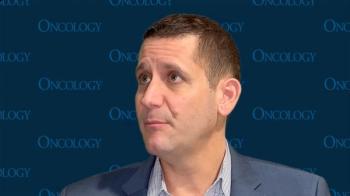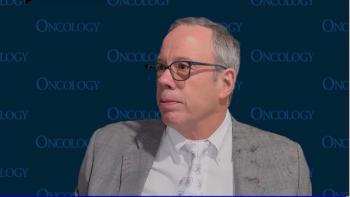
ProtecT Trial 15-Year Follow-Up May be ‘Very Important’ for Prostate Cancer
Fifteen-year results of the ProtecT prostate cancer trial may support the findings of the study’s 10-year follow-up data, according to an expert from Dana-Farber Cancer Institute.
In an interview with CancerNetwork® during the
With a median follow-up of 10 years, investigators of the ProtecT trial concluded that mortality was low regardless of assigned treatment. Additionally, metastases developed in more patients in the active-monitoring group with 6.3 events per 1000 person-years (95% CI, 4.5-8.8) compared with 2.4 events per 1000 person-years (95% CI, 1.4-4.2) for those receiving surgery and 3.0 events per 1000 person-years (95% CI, 1.9-4.9) for those receiving radiotherapy (P = .004).
Disease progression rates in each respective group were 22.9 events per 1000 person-years (95% CI, 19.0-27.5), 8.9 events per 1000 person-years (95% CI, 6.7-11.9), and 9.0 events per 1000 person-years (95% CI, 6.7-12.0; P <.001).
D'Amico, a professor and chair of genitourinary radiation oncology at Brigham and Women’s Hospital and Dana-Farber Cancer Institute, suggested that the 15-year data from the ProtecT study might be consistent with those reported in the 10-year follow-up.
Transcript:
Something that we're all awaiting that will be very important is the 15-year results of the ProtecT trial, which is a study that [randomly assigned] patients between monitoring, radical prostatectomy, radiation, and hormonal therapy. At 10 years, there was a difference in the metastatic rate, doubling the metastatic rate in the active monitoring as opposed to treatment arms, with no difference between the 2 treatments.
The 15-year results will be informative because we know 10-year results are still early. I suspect that the 15-year results might support the 10-year findings. But that's something we're awaiting, and I know that that is supposed to be available in the coming weeks.
Reference
Hamdy FC, Donovan JL, Lane JA, et al. 10-year outcomes after monitoring, surgery, or radiotherapy for localized prostate cancer. N Engl J Med. 2016;375:1415-1424. doi:10.1056/NEJMoa1606220
Newsletter
Stay up to date on recent advances in the multidisciplinary approach to cancer.

















































































